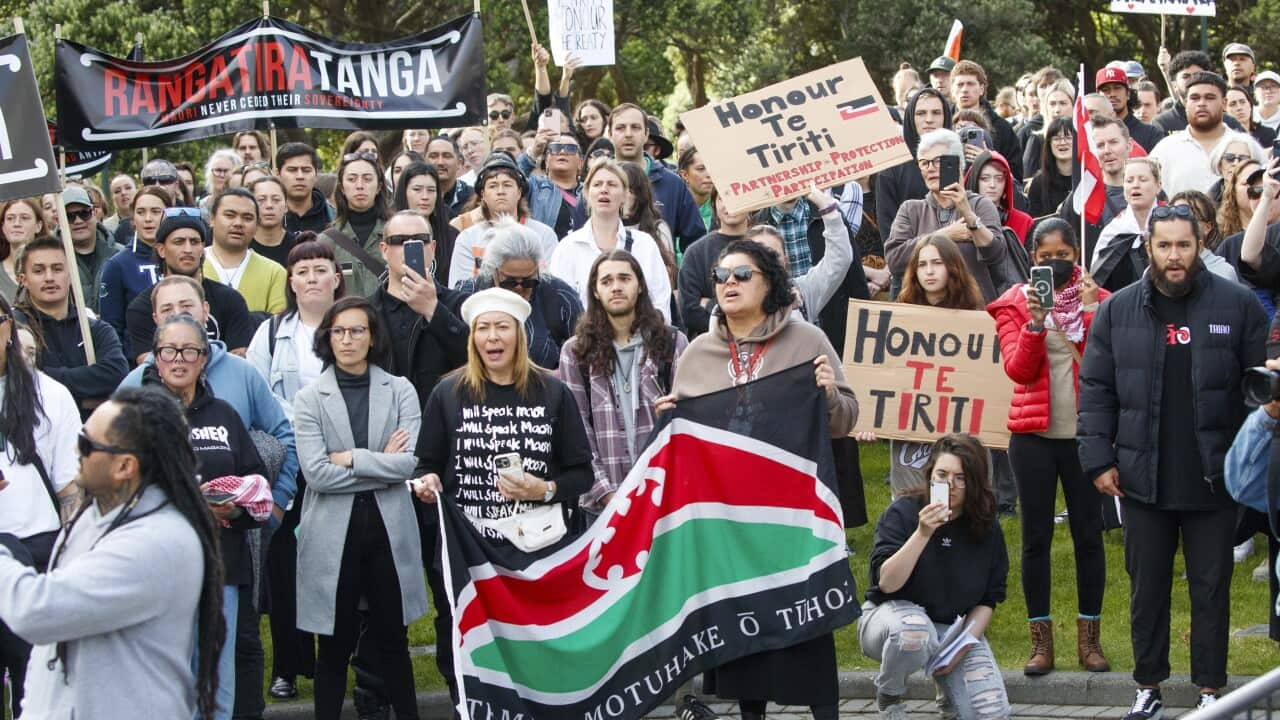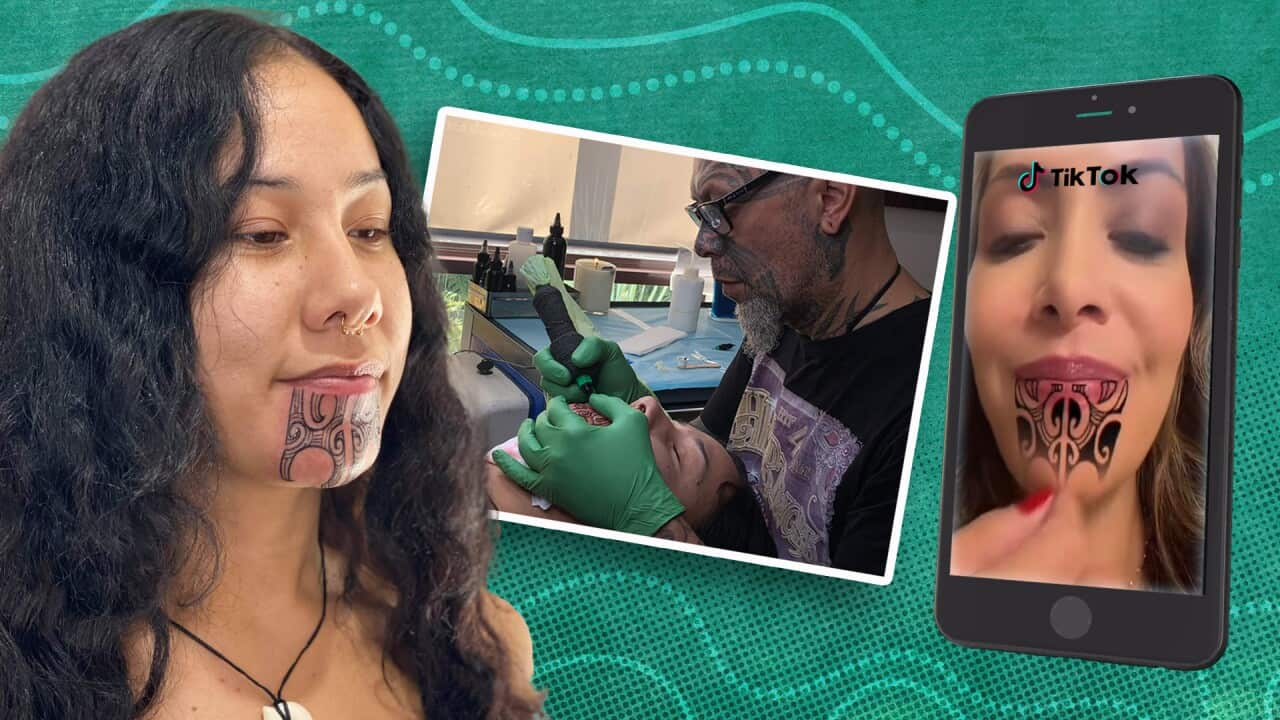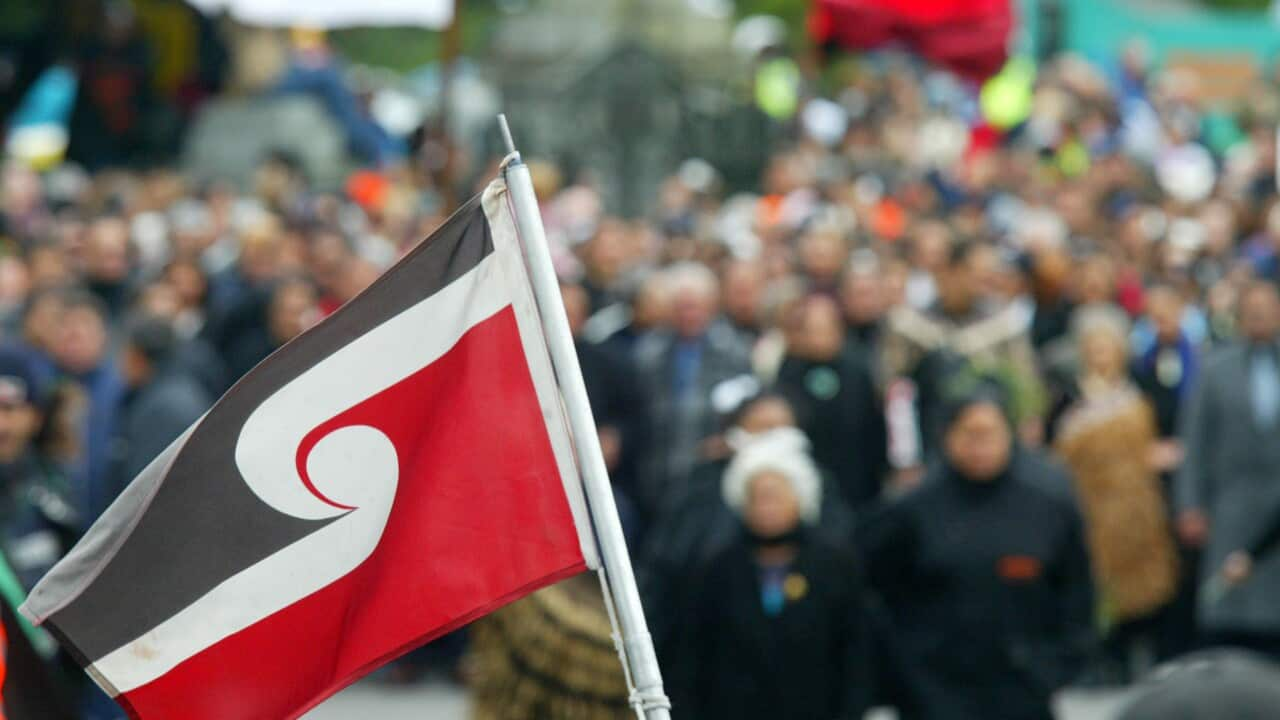Aotearoa/New Zealand has a new government, and it has promised to enact significant change.
Following announcements of policies that will specifically effect Māori, there have been protests across the country as many are concerned the proposed changes will reverse decades of progress.
So, how did we get here and what has the new government proposed?
Te Tiriti o Waitangi and te reo Maori under threat
On October 14, the NZ Labour Party lost its majority to the opposition National Party following a general election.
On 27 November, a three-party, centre-right coalition was sworn in: led by the Nationals, it was also comprised of the smaller Act Party and NZ First.
In the lead-up to the election, the Act Party called for a referendum to redefine the principles of the Treaty of Waitangi, the country’s 180-year-old founding document.

National Maori Action Day' demonstrators protest in Auckland, New Zealand. Credit: Jason Dorday/A
National and NZ First did not agree to a referendum, but deals signed between the three parties include pledges to strip all existing laws of references to the treaty, dial back the use of Māori language in government organisations and scrapping Te Aka Whai Ora (the Māori Health Authority).
The government have also agreed to a Treaty Principles Bill, which would go to a committee for further consideration, to push forward in reviewing and redefining the Treaty.
These proposals could signify a big shift for Aotearoa.
Many Māori are fearful the proposed measures by the government would remove the Treaty from the centre of New Zealand’s constitutional arrangements, and see a reversal of progress.
'Attacked my whole world'

Te Pāti Māori co-leader, Rawiri Waititi, called the National Day of Action an 'activation' as people took the streets in opposition to the policies of the new right-wing government. Source: AAP / Ben McKay
Speaking at the rally, Te Pāti Māori co-leader, Rawiri Waititi called gatherings an "activation" rather than a "protest".
“Our people are activated, our people are ready and our people will continue to fight as we’ve done for 183 years,” said Waititi.
Te Pāti Māori took the protest inside Parliament, breaking protocol as they stepped forward to be sworn in.
How can I not take anything personally when it feels like these policies were made about me?Hana-Rawhiti Maipi-Clarke
All six Te Pāti Māori Members of Parliament swore allegiance to their grandchildren under the Treaty of Waitangi first, some also performed a haka, before having to pledge allegiance to King Charles - mandatory protocol to serve as an MP.
In her maiden speech on Wednesday, Te Pāti Māori MP, Hana-Rawhiti Maipi-Clarke, criticised the government.
"In only a couple of weeks, in only 14 days, this government has attacked my whole world from every corner,” said Maipi-Clarke.
“Health, taiao, wai, whenua, natural resources, Māori wards, reo, tamariki, and the right of me and you to be in this country under Te Tiriti.
"How can I not take anything personally when it feels like these policies were made about me?"

Te Pāti Māori MP Hana-Rawhiti Maipi-Clarke at the swearing-in ceremony in Parliament. Source: AAP / Mark Mitchell
Disagreements over the translation of the Treaty have persisted for decades, including whether sovereignty was ceded by Māori.
One man abseiled inside the building, using an angle grinder and spray paint to damage the display.
Others held signs saying ‘tell the truth’ in both English and Te Reo Māori, while another used a megaphone to critique the display.
“It says that Māori ceded sovereignty to the Crown. That is a lie,” said a man at the protest.
“We are here to tell Te Papa, to tell the truth … you’re not just here to display these two documents, you need to be adding context, you need to be helping people to understand.”
Protests and demonstrations are likely to continue, including on Waitangi Day, February 6, when Prime Minister Chris Luxon is expected to visit the grounds where the treaty was signed.













